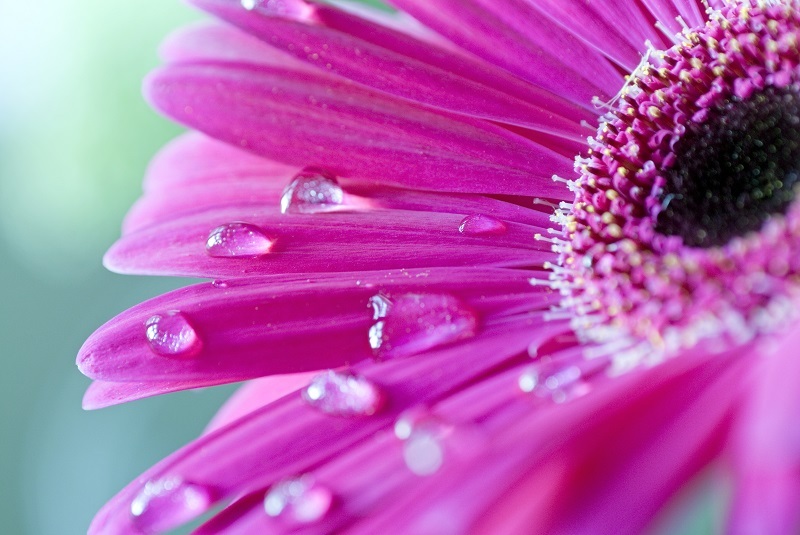Mastering the art of hydrangea care with ease
Posted on 14/08/2025
Mastering the Art of Hydrangea Care with Ease
Hydrangeas are cherished for their voluminous blooms, stunning color variations, and garden versatility. Whether you're a novice gardener or a seasoned horticulturist, mastering hydrangea care can feel daunting. However, with the right insights and techniques, anyone can cultivate thriving, radiant hydrangea plants that become the pride of any landscape.
In this comprehensive guide, we'll explore the best practices for successful hydrangea cultivation, from selecting the right varieties and providing ideal conditions to troubleshooting common problems and encouraging abundant blooms. Perfect your hydrangea gardening skills and discover the secrets to easy, effective plant care.
Understanding Hydrangea Basics
Before diving into advanced care tactics, it's essential to understand what makes hydrangeas unique. These perennial shrubs are native to Asia and the Americas and flourish in a range of environments with the right guidance.
Popular Hydrangea Varieties
- Bigleaf Hydrangea (Hydrangea macrophylla): Known for their large, mophead or lacecap blooms, and are the most popular type in home gardens.
- Panicled Hydrangea (Hydrangea paniculata): Recognizable for their cone-shaped flowers which tolerate sunnier spots and colder climates.
- Smooth Hydrangea (Hydrangea arborescens): Features round flower clusters and is valued for its hardiness.
- Oakleaf Hydrangea (Hydrangea quercifolia): Named for the shape of their leaves, these are autumn standouts thanks to their colorful fall foliage.
- Mountain Hydrangea (Hydrangea serrata): Smaller, hardier cousin to the bigleaf, ideal for compact gardens.
Each type offers distinct flower forms, colors, and growth habits, meaning hydrangea care tips should be adjusted to suit your chosen variety.

Planting Hydrangeas: Laying the Foundation
Hydrangeas thrive when their basic needs are met from the start. The art of hydrangea planting sets the stage for years of robust growth and beautiful blooms.
Choosing a Suitable Location
- Light: Most hydrangeas prefer morning sun and afternoon shade, although paniculata types tolerate more direct sunlight.
- Soil: Well-draining, fertile soil is key. Amend the planting area with organic matter to boost moisture retention and drainage.
- Space: Plant hydrangeas with enough room for air circulation--typically 3 to 10 feet apart--depending on the variety.
How to Properly Plant Hydrangeas
- Dig a hole twice as wide and as deep as the root ball.
- Loosen the roots and position the hydrangea so the top of the root ball sits flush with the soil surface.
- Backfill with soil, pressing down gently to remove air pockets.
- Water thoroughly after planting and mulch to retain moisture.
Plant in spring or fall to give your hydrangeas the best start with less stress from summer heat or winter cold.
Watering Hydrangeas: Striking the Right Balance
Water is crucial for healthy hydrangeas. These plants derive their name from the Greek words "hydor" (water) and "angeion" (vessel), signaling their preference for consistent moisture. However, both underwatering and overwatering can hamper plant health.
Best Practices for Hydrangea Watering
- Keep soil consistently moist, but not soggy.
- Water deeply at the base to encourage root development rather than splashing foliage.
- Early morning is the preferred time for watering to limit evaporation and reduce disease risk.
- Hydrangeas generally require about 1 inch of water per week, more during hot, dry periods.
- Mulch with 2-3 inches of bark or compost to reduce moisture loss.
Monitor rainfall and supplement with irrigation as needed, especially during the first year after planting and during blooming periods.
Fertilizing for Vigorous Growth
Balanced nutrition is key to lush hydrangea blooms. Over-fertilizing can encourage leafy growth at the expense of flowers, while poor nutrition results in weak, spindly plants.
Choosing a Fertilizer
- General-purpose slow-release fertilizers (10-10-10 or 14-14-14): Ideal for most varieties.
- Special hydrangea fertilizers: Enhance flower production and can help manipulate color (for bigleaf hydrangeas).
- Organic options: Compost, aged manure, or fish emulsion for eco-friendly nutrition.
Fertilize in early spring as the plant emerges from dormancy and again in mid-summer if growth seems sluggish. Always follow package instructions and avoid late-season fertilization, which can spur tender growth prone to frost damage.
Pruning: Timing and Technique Matter
Proper pruning is one of the secrets to successful hydrangea care. Not all hydrangea types benefit from the same approach, so identify your plant variety before picking up the shears.
Pruning Hydrangea Macrophylla & Serrata (Bigleaf & Mountain)
- These types form buds on "old wood" (last year's stems).
- Prune immediately after blooming, removing spent flowers and weak wood.
- Do not prune in fall, winter, or early spring, or you risk trimming off next year's flower buds.
Panicled & Smooth Hydrangeas (Paniculata & Arborescens)
- Flower on "new wood," or growth produced in spring.
- Prune in late winter or early spring, cutting stems back by one-third to encourage vigorous new shoots.
- Remove oldest stems periodically to revitalize older plants.
Regular pruning helps shape the shrub, improves air flow, and stimulates better blooming. Always use clean, sharp tools to prevent disease spread.
Manipulating Hydrangea Flower Color
Perhaps the most fascinating aspect of hydrangea gardening is the ability to influence bloom color, especially in bigleaf hydrangeas. Soil pH is the magic ingredient behind this phenomenon.
How Soil pH Affects Blooms
- Acidic soil (pH below 6): Tends to produce blue to purple flowers.
- Alkaline soil (pH above 7): Coaxes blooms into pink or even red hues.
- White hydrangeas generally do not change color with soil pH.
Changing Hydrangea Color
- For blue flowers: Apply aluminum sulfate or add organic mulch such as pine needles to acidify the soil.
- For pink flowers: Apply garden lime to raise soil pH.
- Process takes time--test soil annually and adjust as needed for steady color results.
Note: Mountain and bigleaf hydrangeas respond best; other types retain their natural coloring regardless of soil acidity.
Troubleshooting Common Hydrangea Issues
Even with meticulous care, hydrangeas can encounter some challenges. Spotting problems early helps keep plants healthy and attractive season after season.
Pest and Disease Concerns
- Aphids and spider mites: Treat with horticultural oil or insecticidal soap.
- Leaf spots and powdery mildew: Improve sunlight, increase airflow, and avoid overhead watering to deter these fungal issues.
- Root rot: Occurs with persistently soggy soil; ensure good drainage to prevent.
- Slugs: Use traps or remove by hand, especially after rain.
Other Common Hydrangea Problems
- Wilting: Can indicate underwatering, root stress, or too much sun--move to shade or water more consistently.
- No flowers: Likely from improper pruning, cold injury to buds, or feeding too much nitrogen.
- Yellowing leaves: Often a sign of nutrient deficiency or poor drainage.
Encouraging Abundant and Spectacular Blooms
The dream of every hydrangea grower is a profusion of lush, oversized blooms. Maximize flower production with the following tips:
- Ensure proper site selection: Right light and soil matter immensely.
- Stay consistent with care: Regular watering and yearly fertilizing make a difference.
- Master variety-specific pruning: Remove dead wood at the correct time.
- Boost with mulch: Mulching conserves moisture and feeds the soil.
- Address issues swiftly: At the first sign of pests, nutrient problems, or disease, take action.
Seasonal Hydrangea Maintenance Checklist
- Spring: Prune (if type requires), fertilize, mulch, and monitor new growth.
- Summer: Water regularly, deadhead spent blooms, and monitor for pests.
- Autumn: Reduce watering, apply mulch, and protect if frost is expected.
- Winter: For cold climates, cover roots with mulch or use burlap windbreaks for exposed plants.

Hydrangea Care FAQs
How much sunlight do hydrangeas need?
Most hydrangea varieties prefer partial shade, with at least 4 hours of morning sun. Panicle hydrangeas can tolerate full sun in cooler climates but may require protection from hot afternoon rays in warmer regions.
When should I repot or transplant hydrangeas?
The best time to relocate or repot is in early spring or late fall, when the bush is dormant. Water thoroughly before and after moving to reduce transplant shock.
Will hydrangeas bloom every year?
If you provide proper care, including correct pruning and winter protection, hydrangeas will flower annually. However, errant pruning or bud damage can lead to a bloomless season--especially in bigleaf types.
How can I make hydrangeas bushier?
Pinching back new growth or light pruning just above leaf nodes in spring can stimulate branching. Regular feeding and maintaining healthy soil also contribute to a fuller plant.
Conclusion: Transform Your Garden with Easy Hydrangea Care
By paying attention to variety-specific needs, responding to your plants' environment, and following these expert strategies, you'll quickly master hydrangea care with ease. Creating a thriving hydrangea bed or border not only beautifies your yard but provides a long-lasting source of seasonal color and interest.
Embrace the joy of growing hydrangeas--from the first burst of spring green to the vibrant summer blossoms and fiery fall foliage. With these tips, anyone can develop a green thumb and enjoy the exuberant charm of well-tended hydrangeas year after year.
Start your journey to hydrangea mastery today and watch your garden flourish!
Latest Posts
Cut Flowers 101: Essential Care Tips
Discover the Intriguing Symbolism and Color Meanings of Peony Flowers
Tulip Mysteries: Seven Astonishing Facts Few Know






